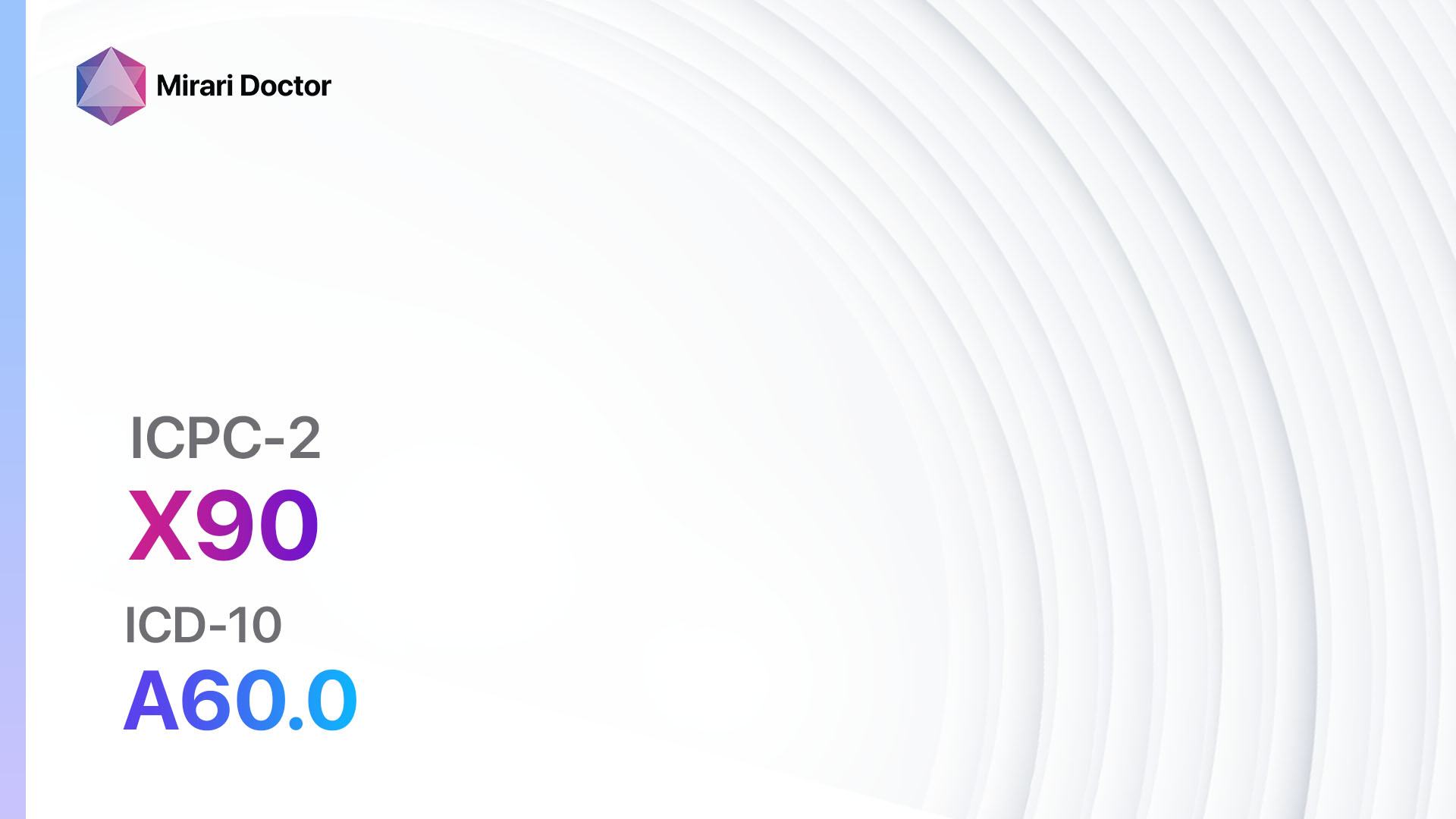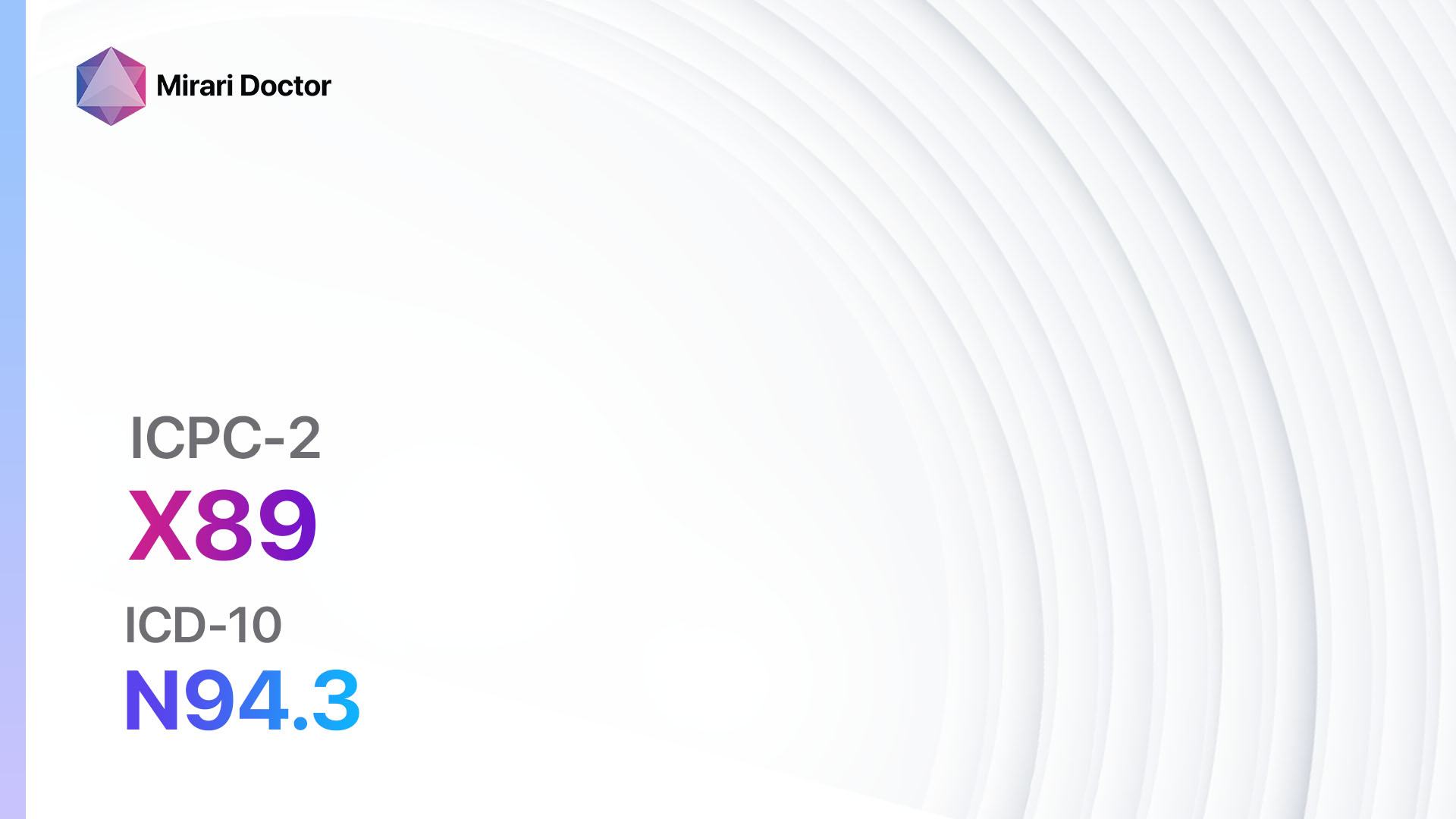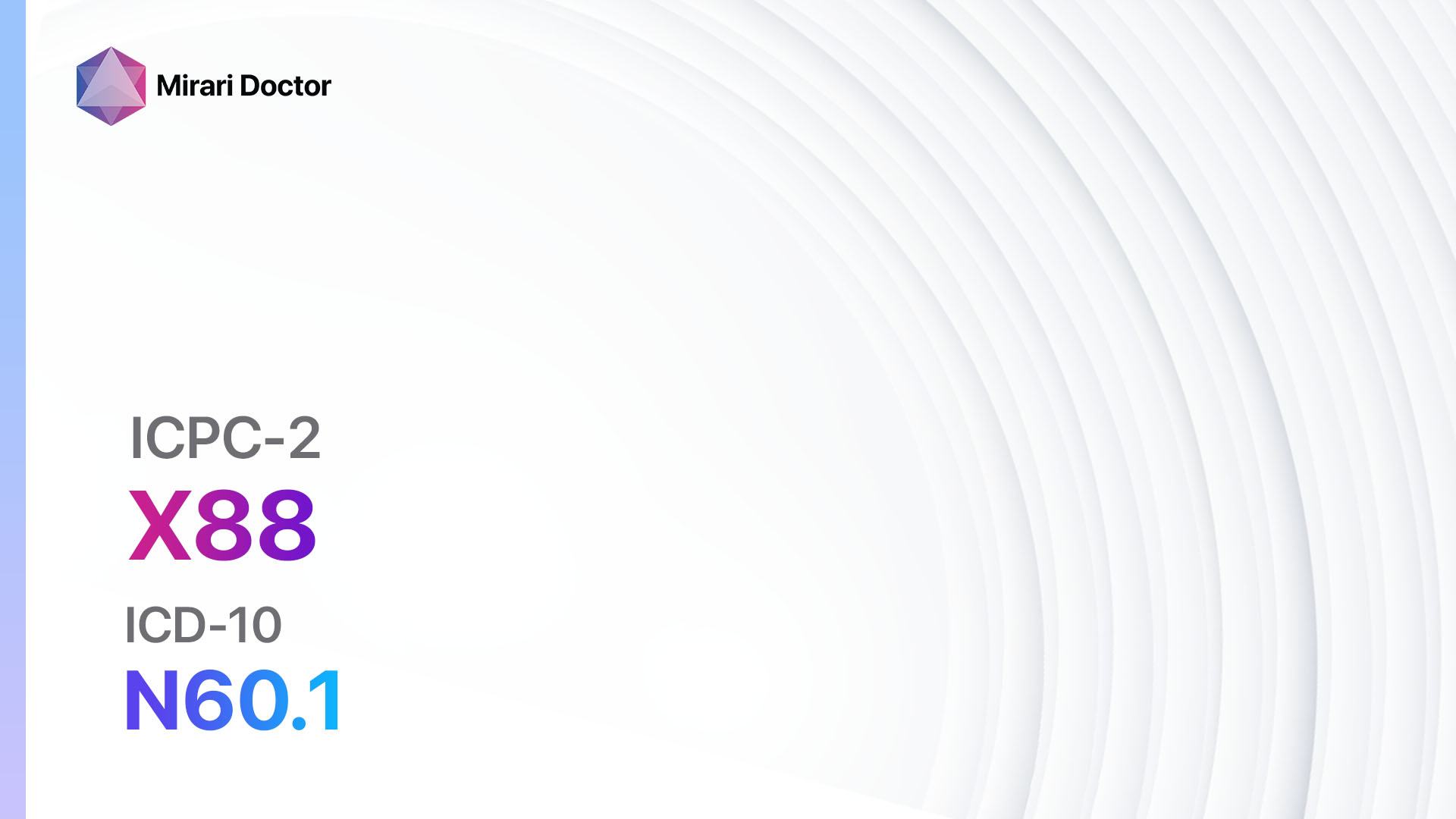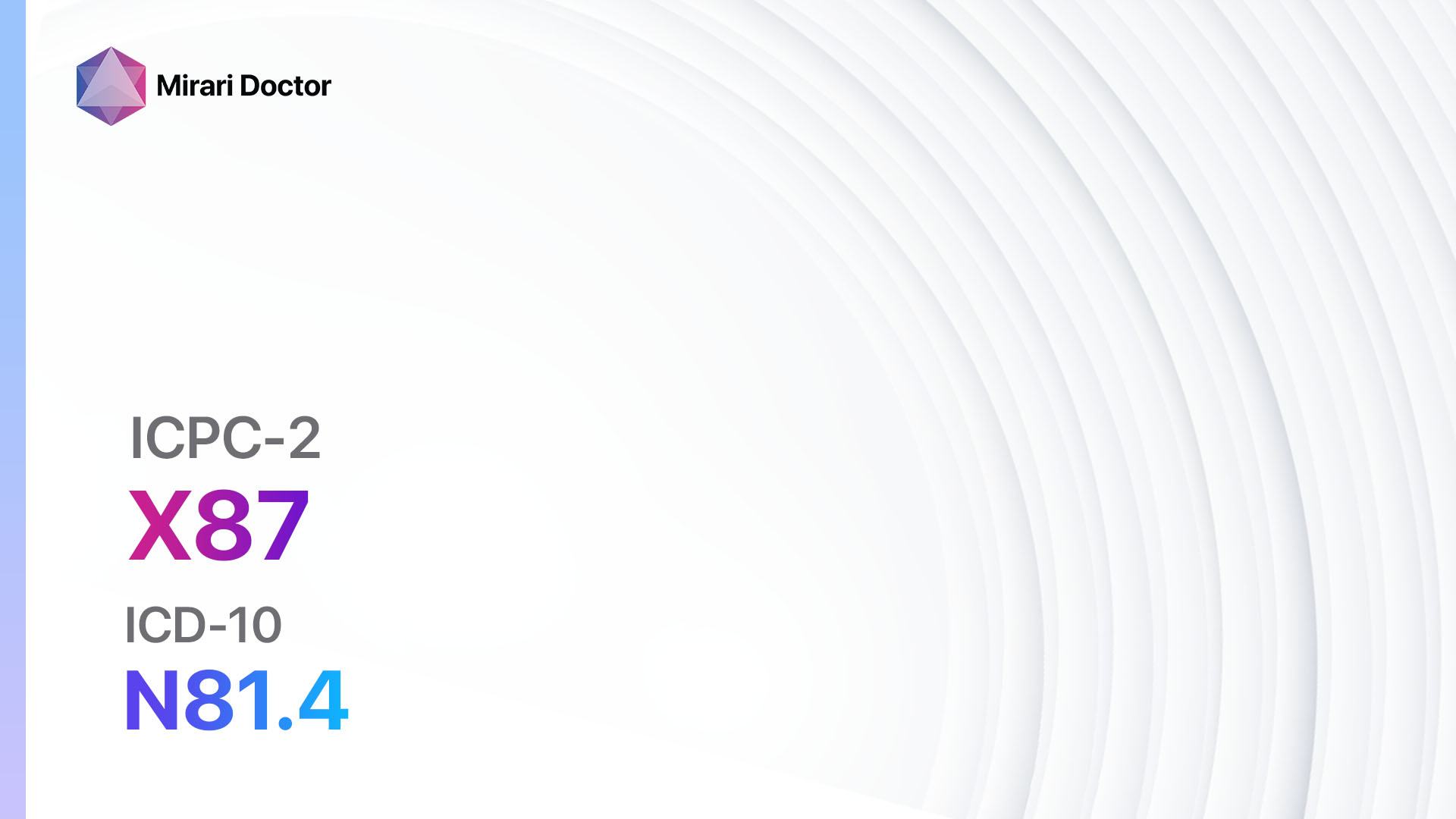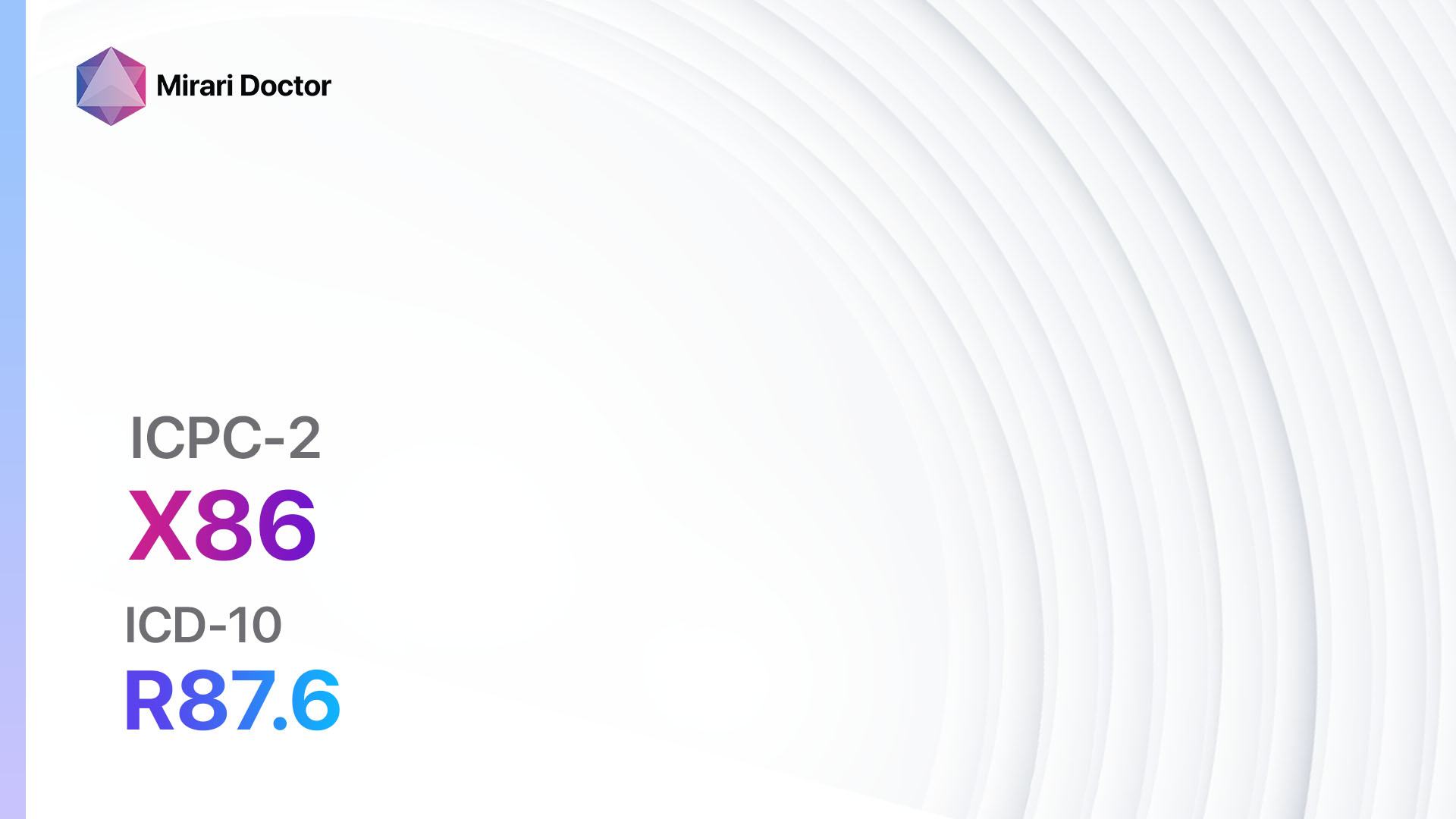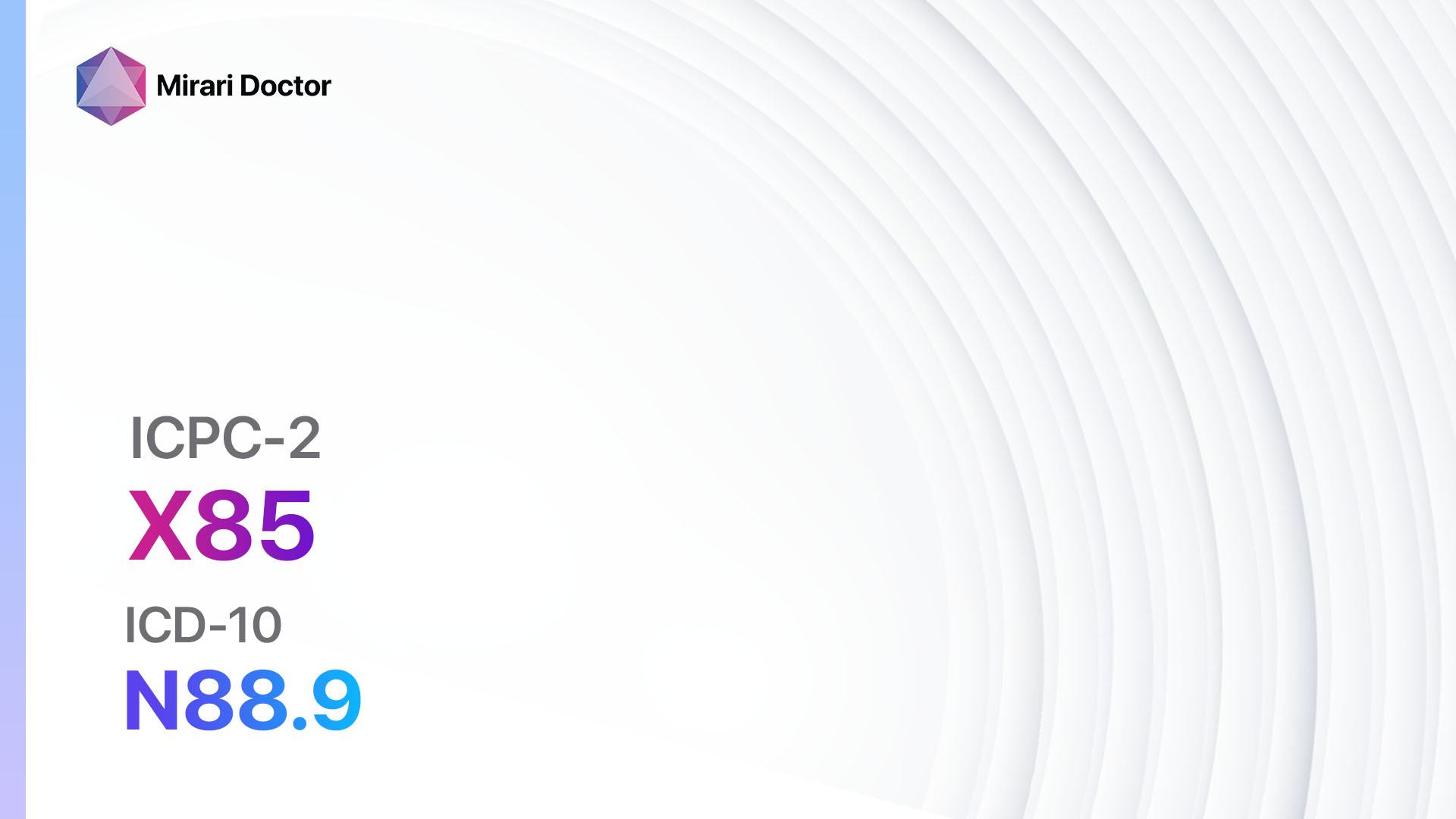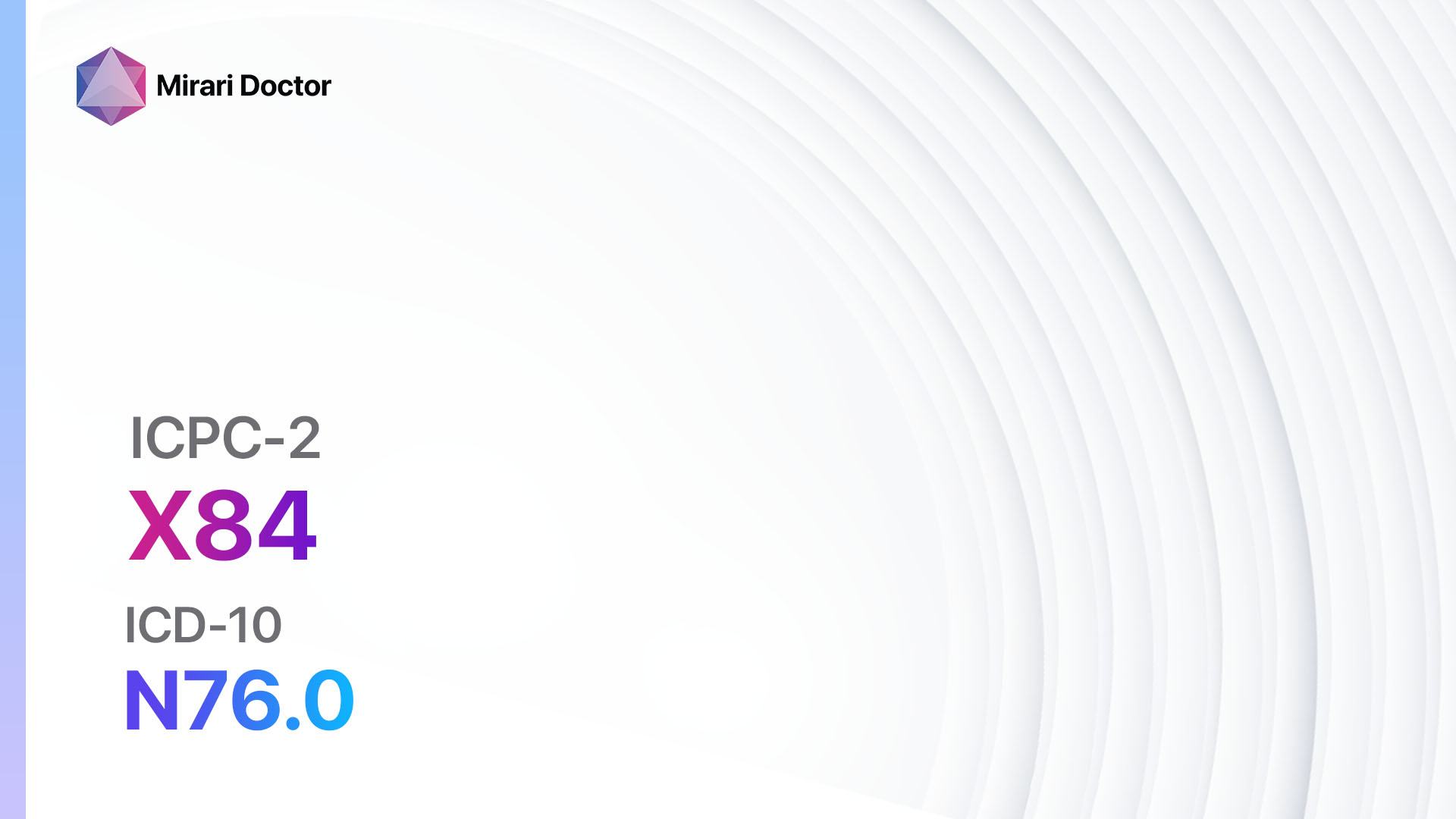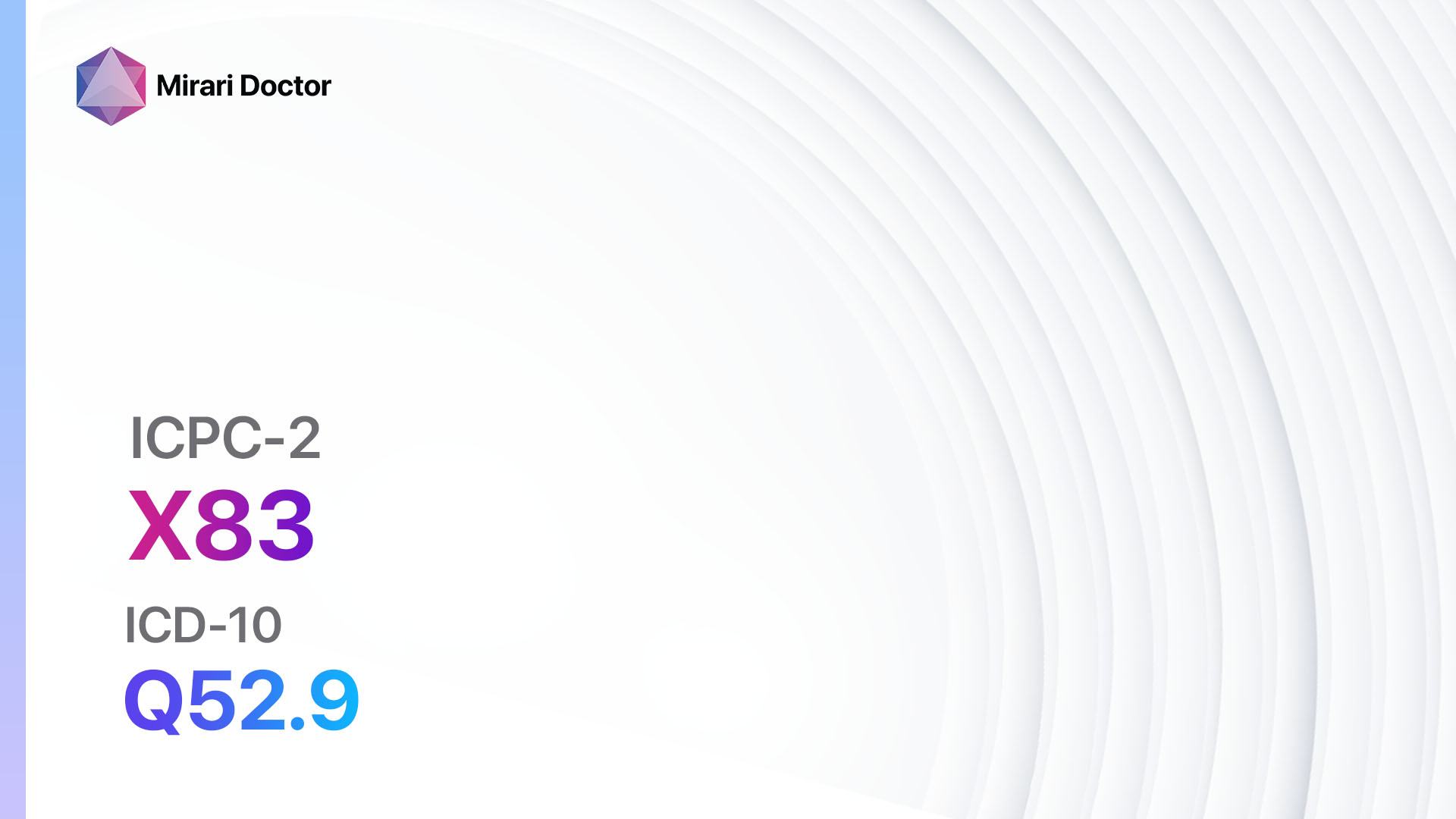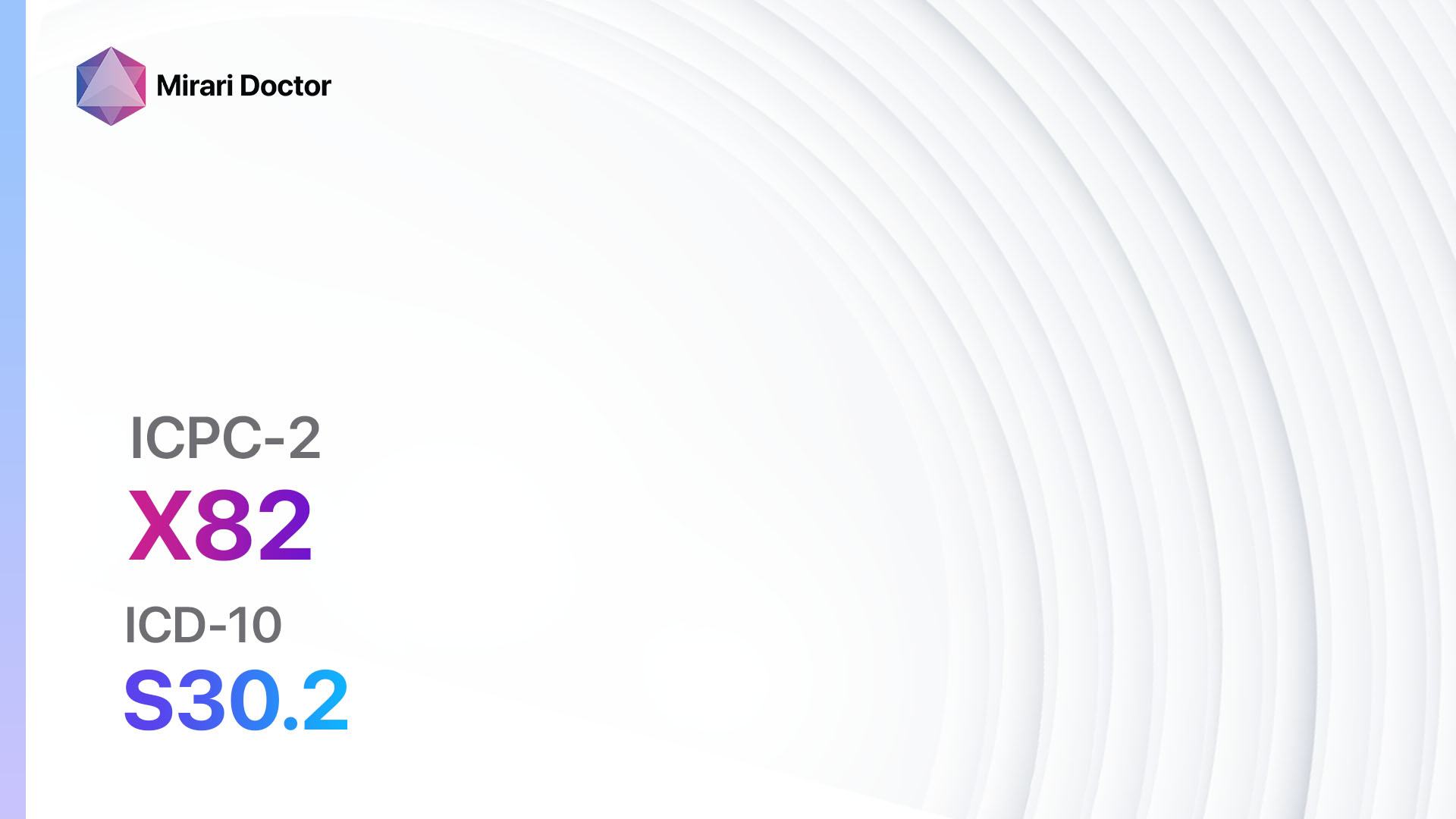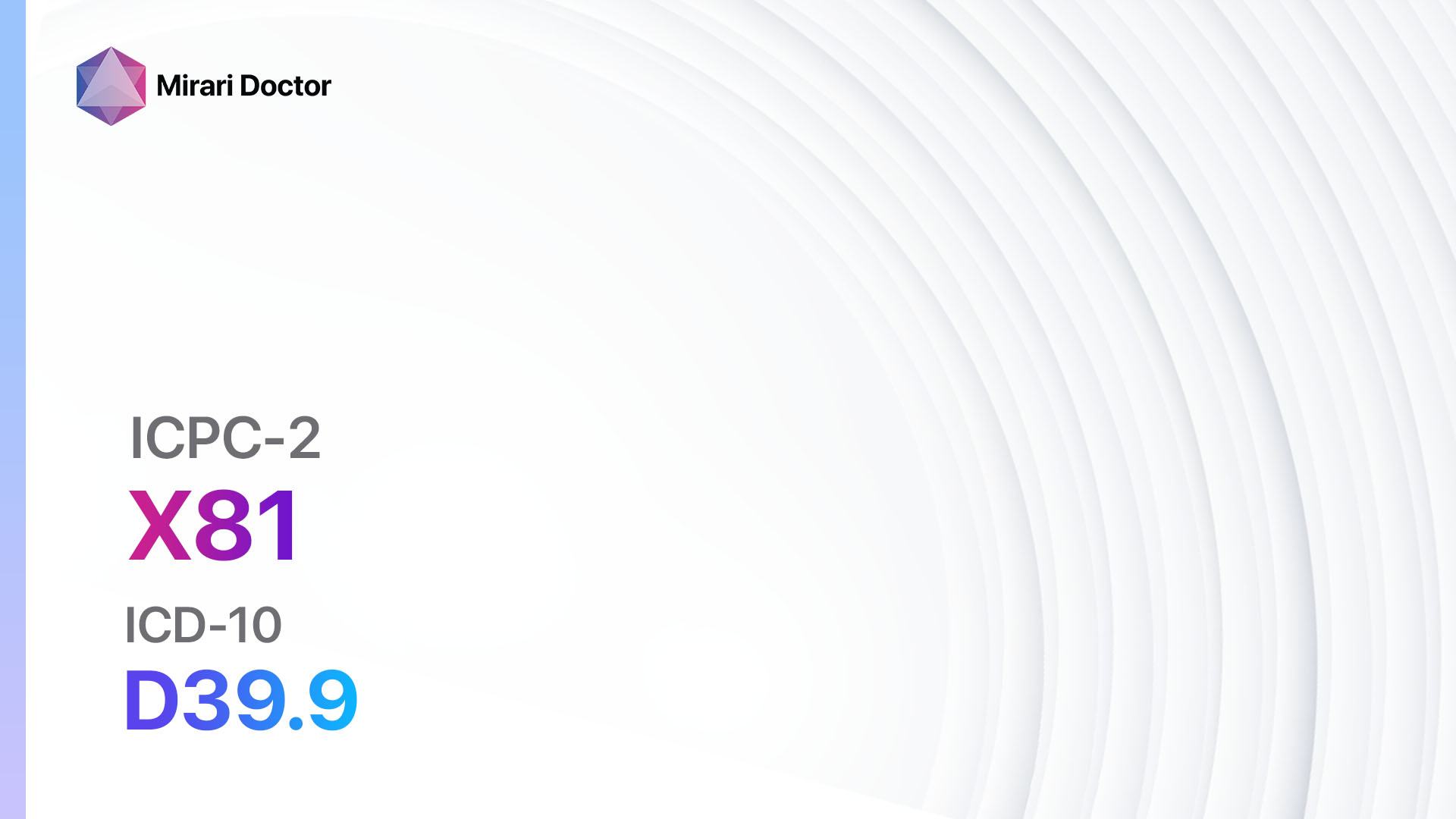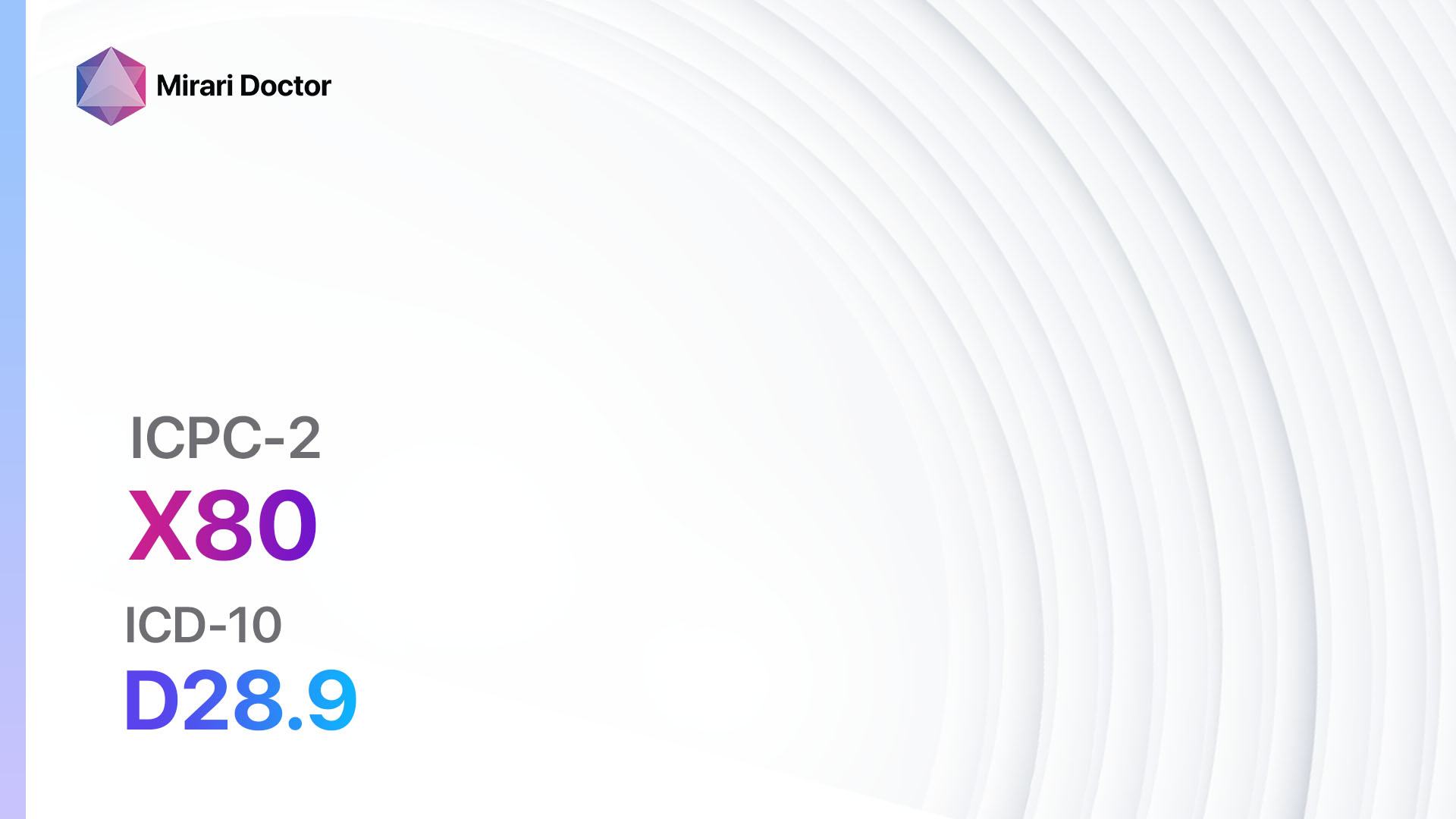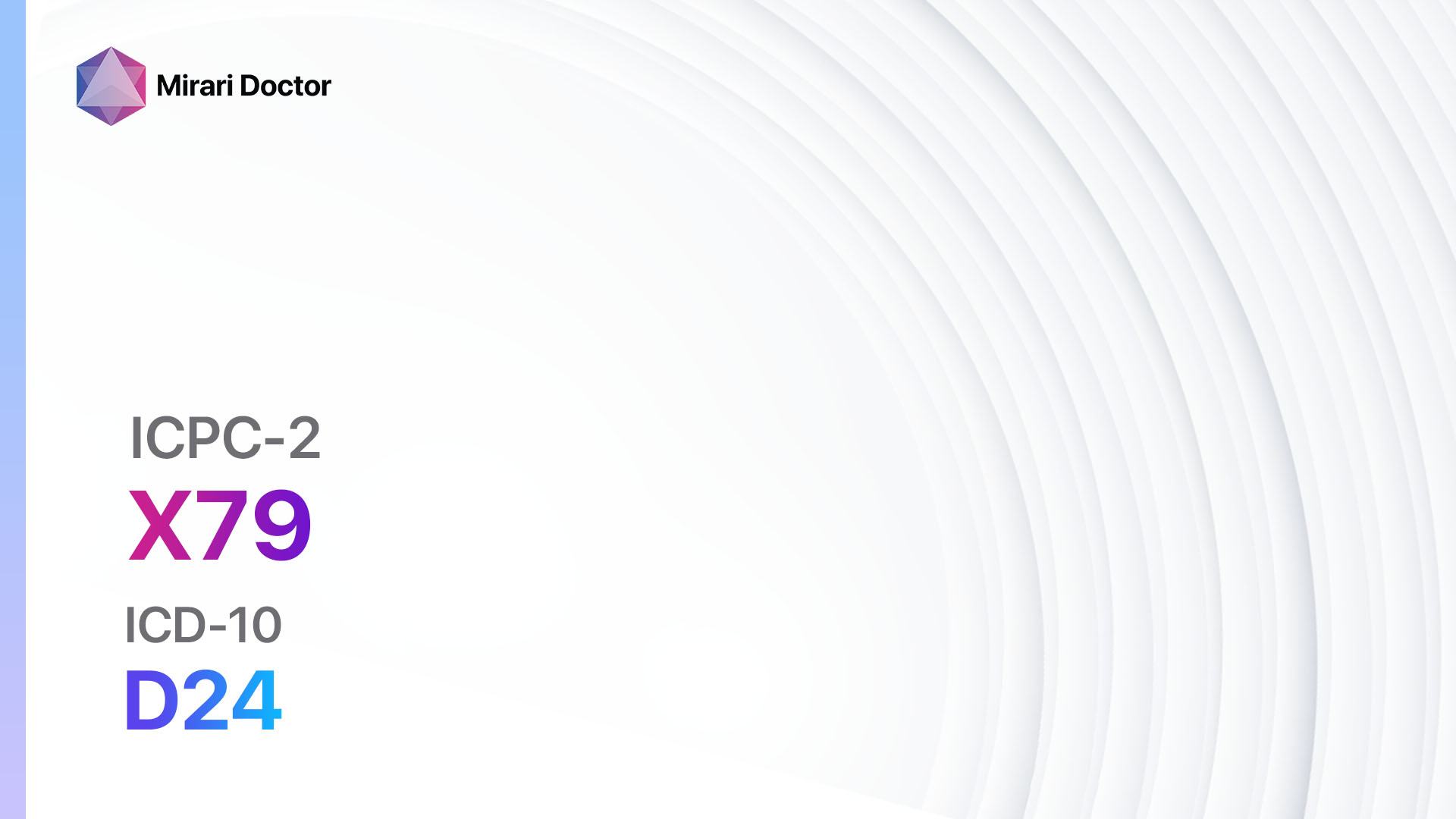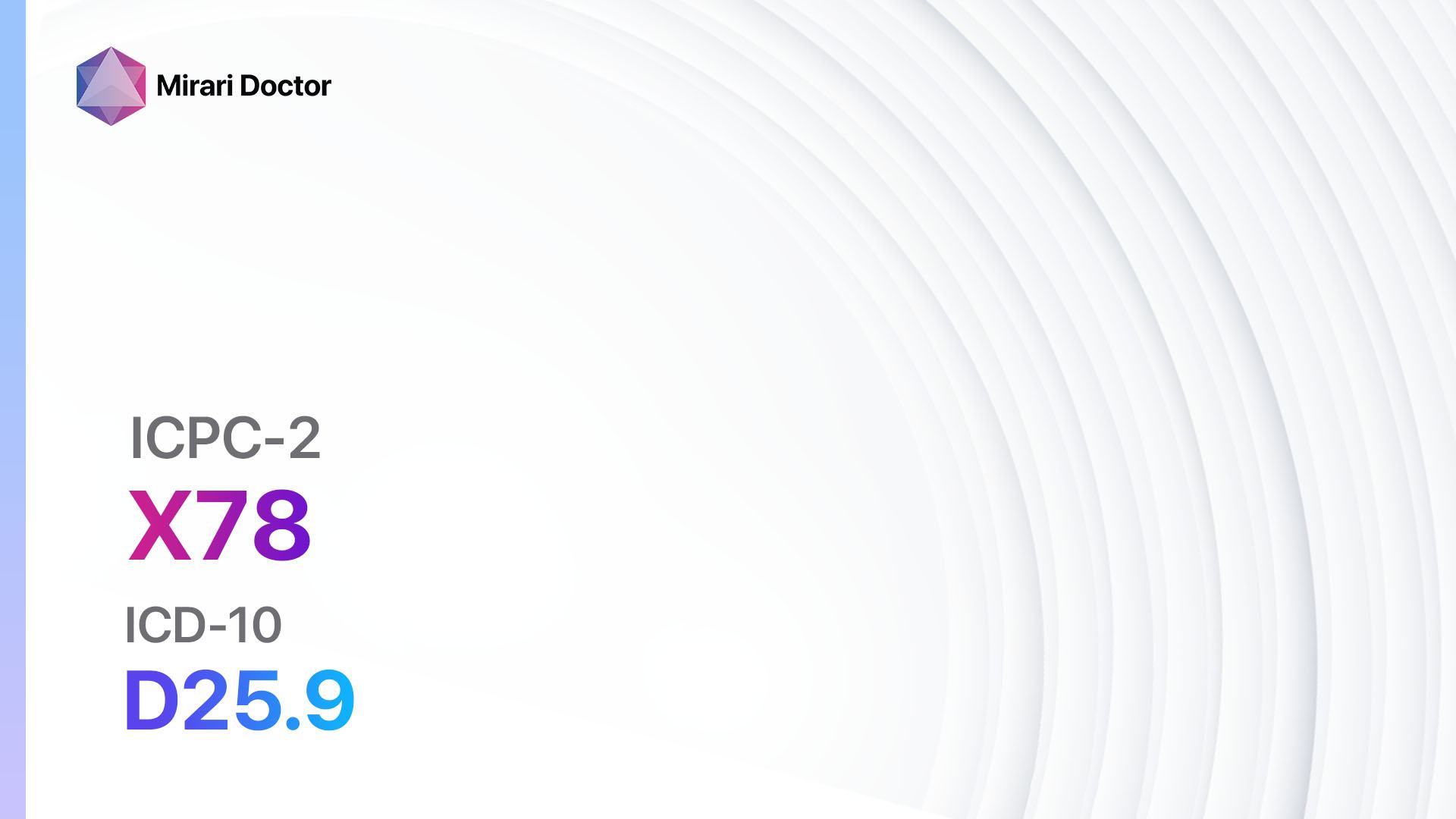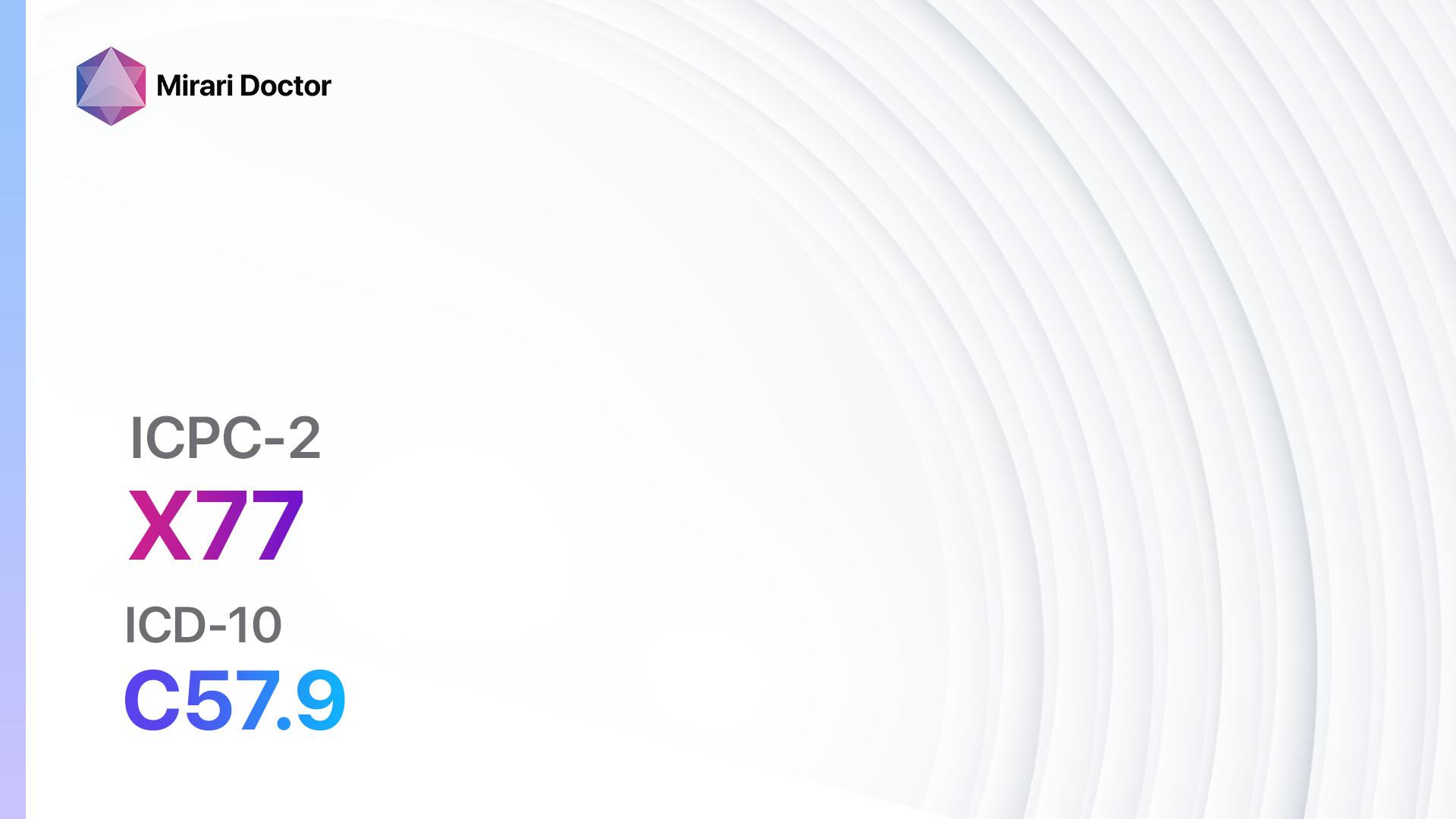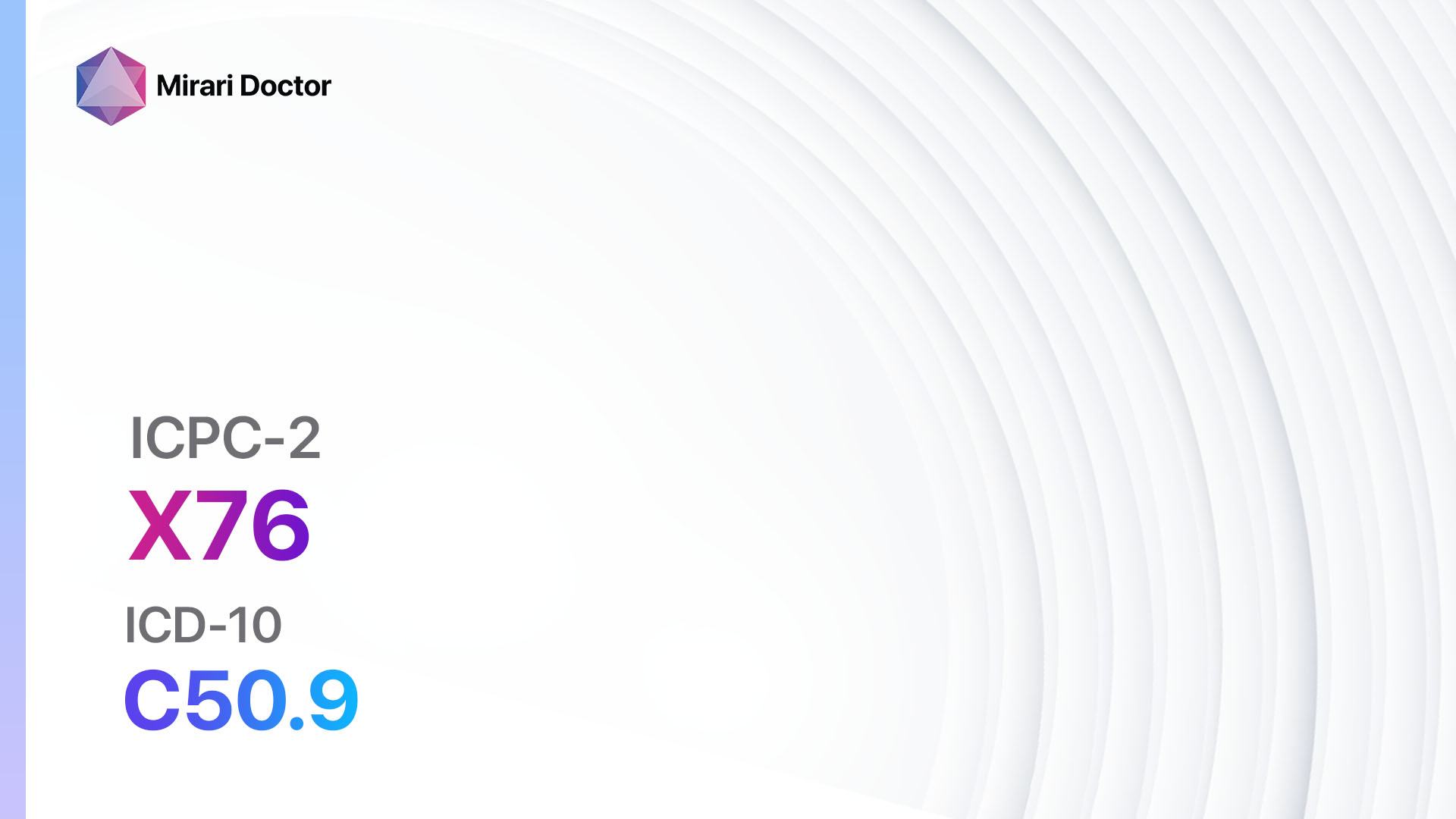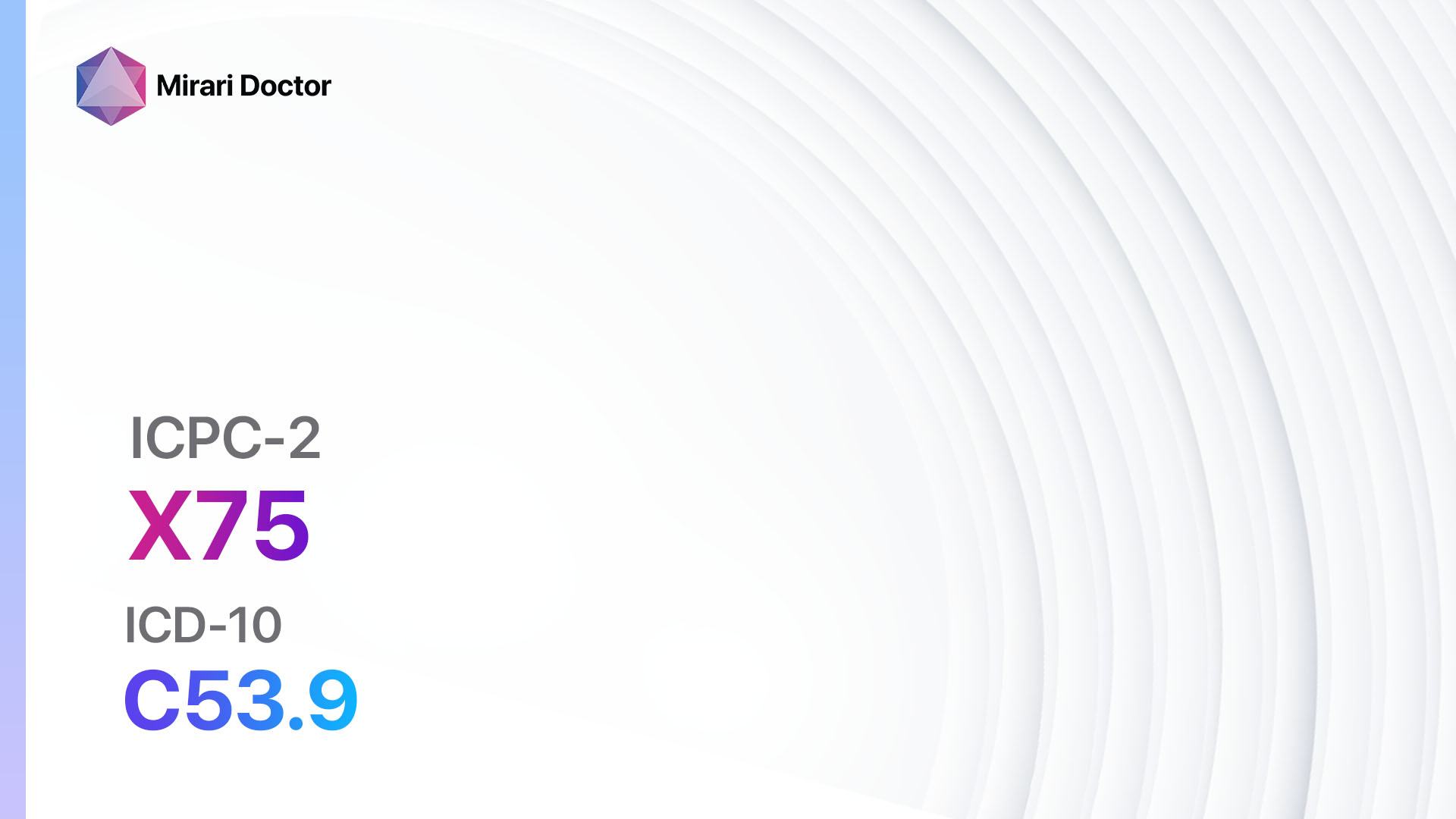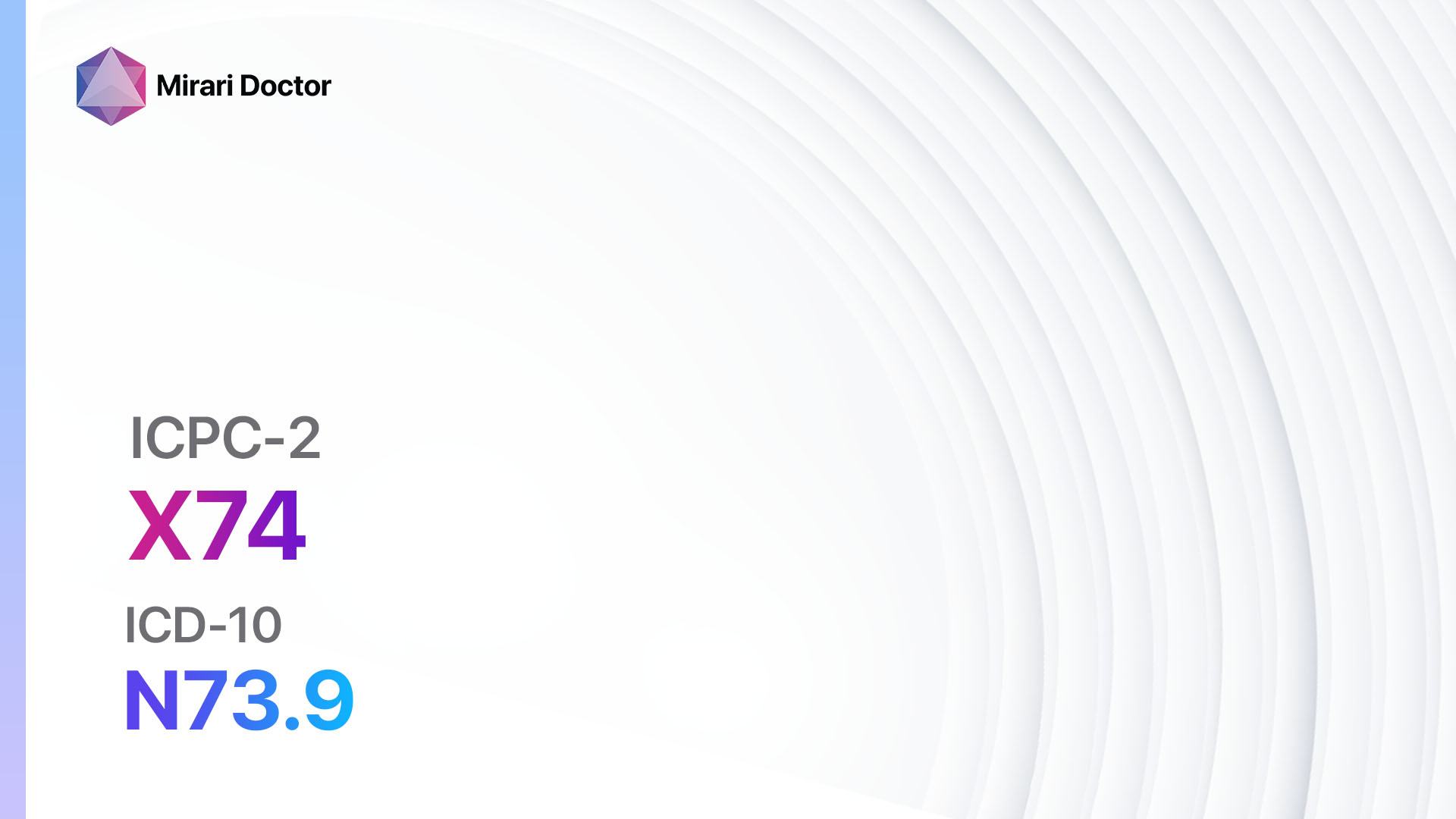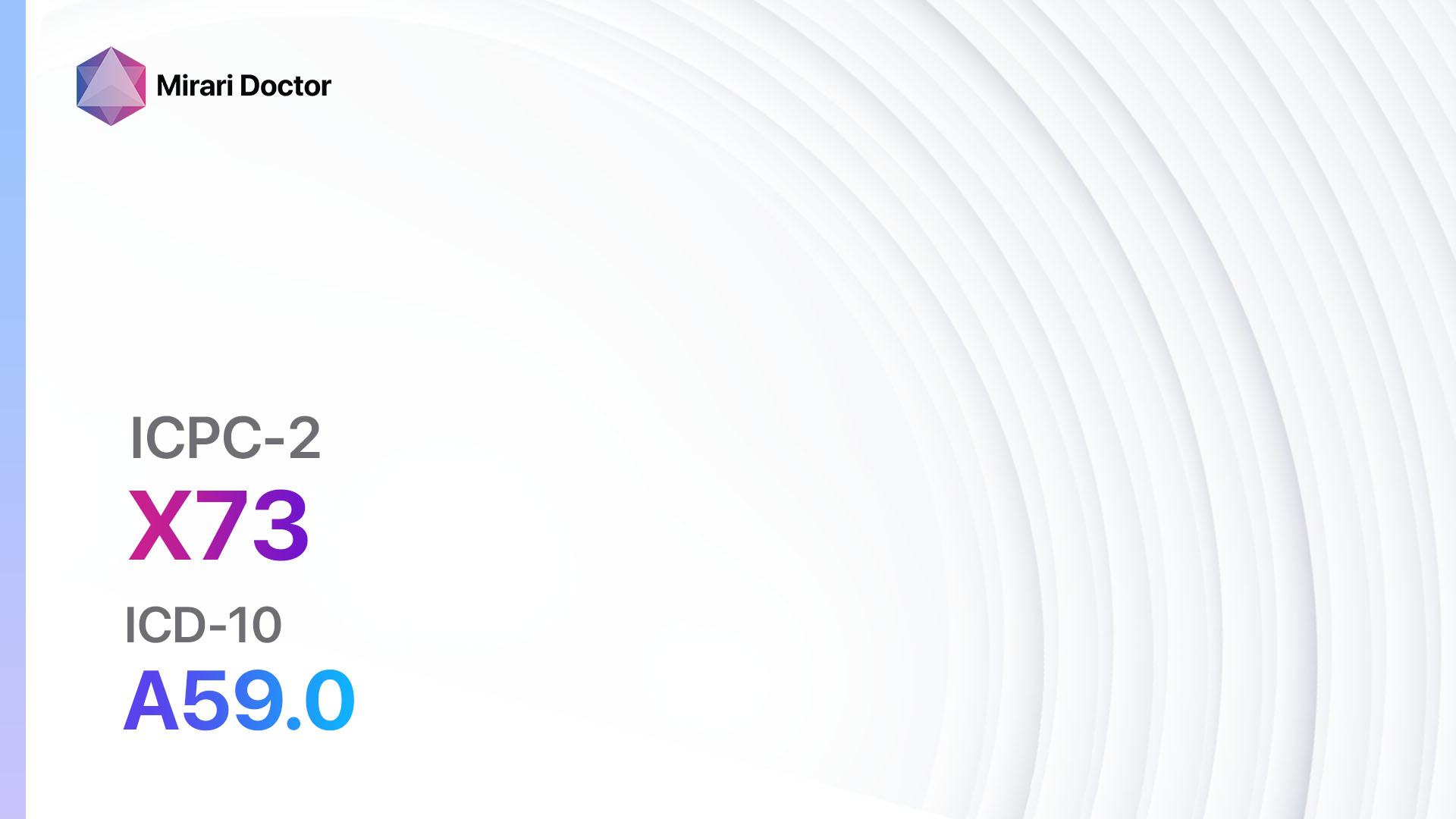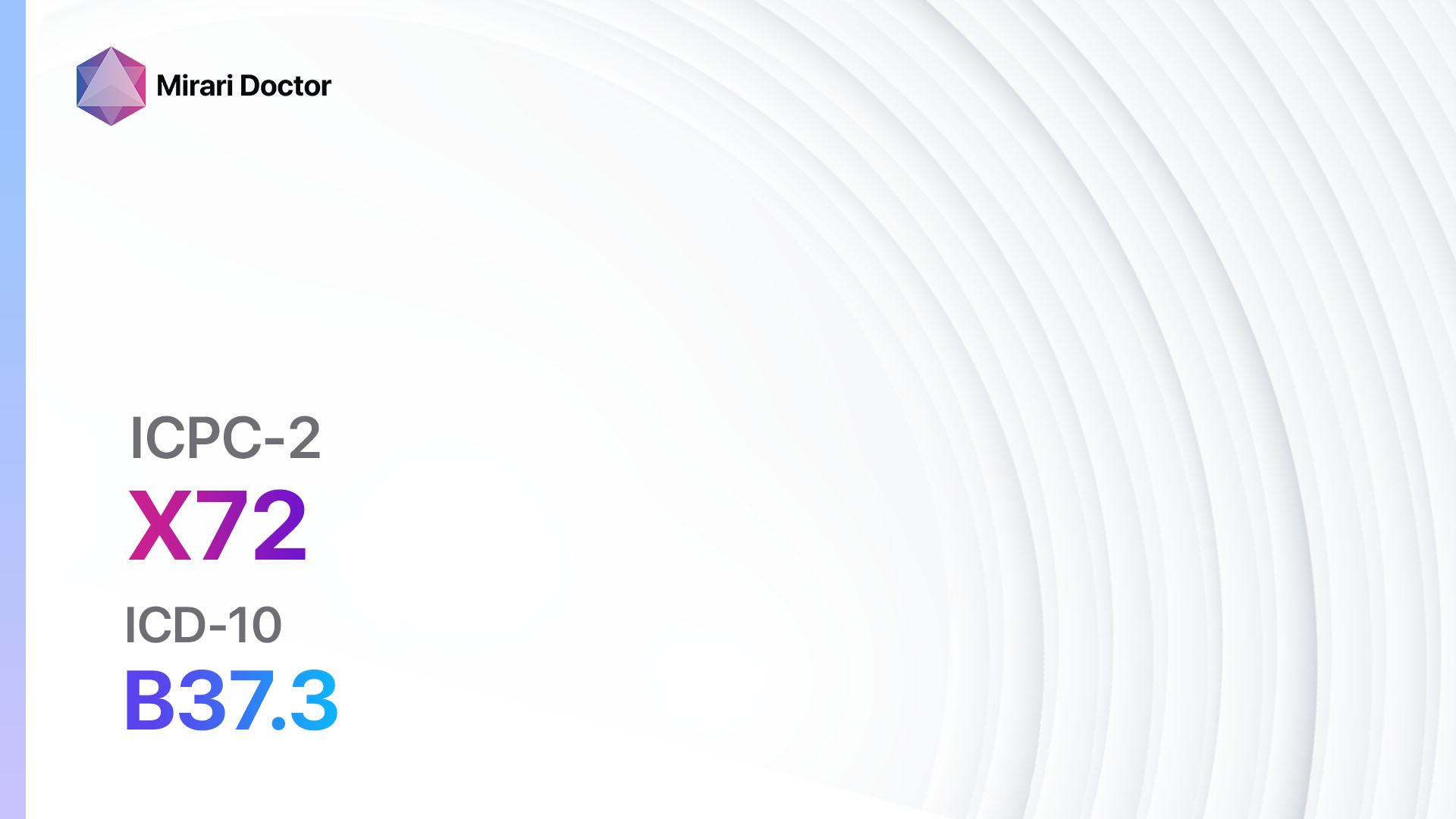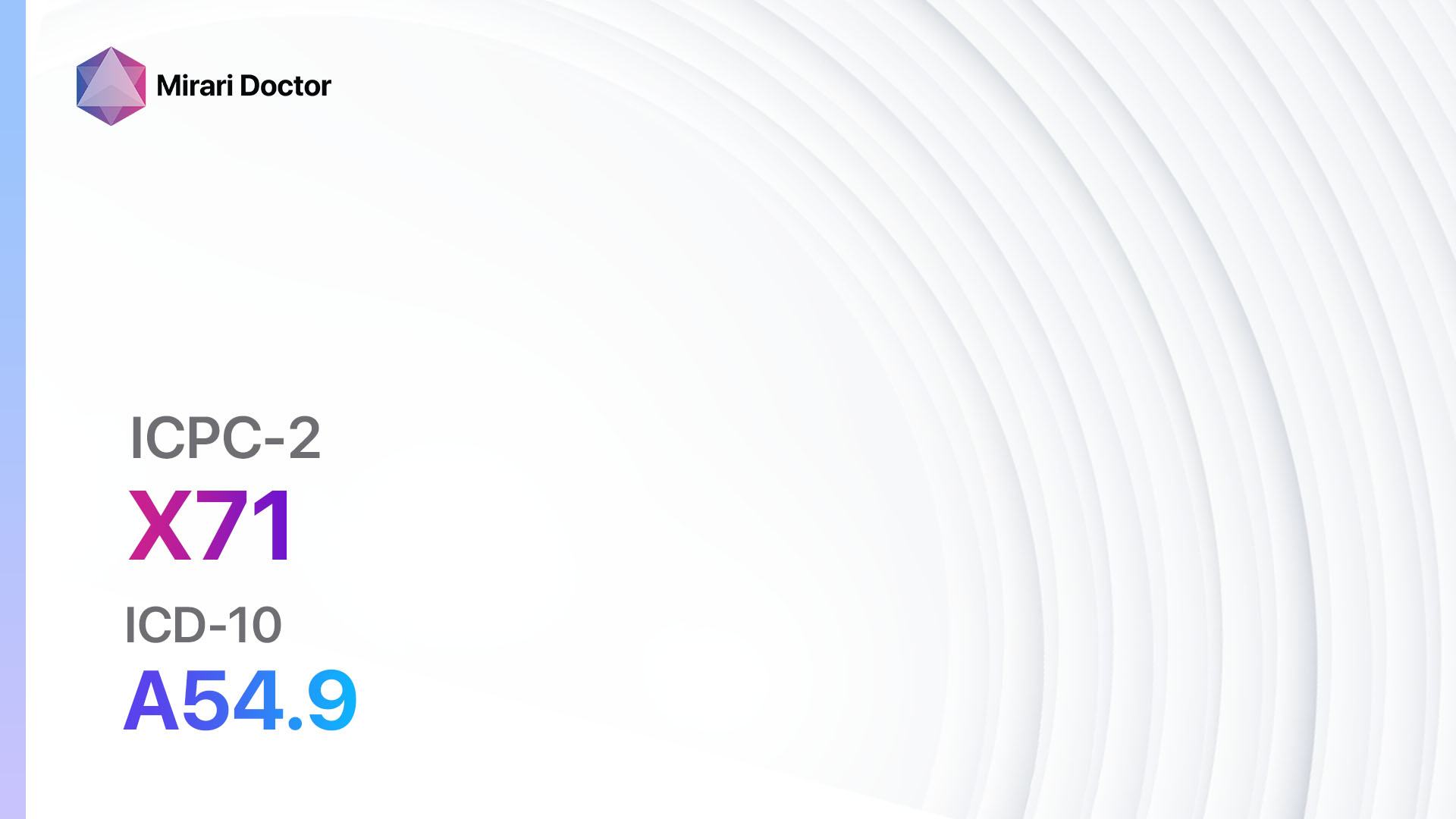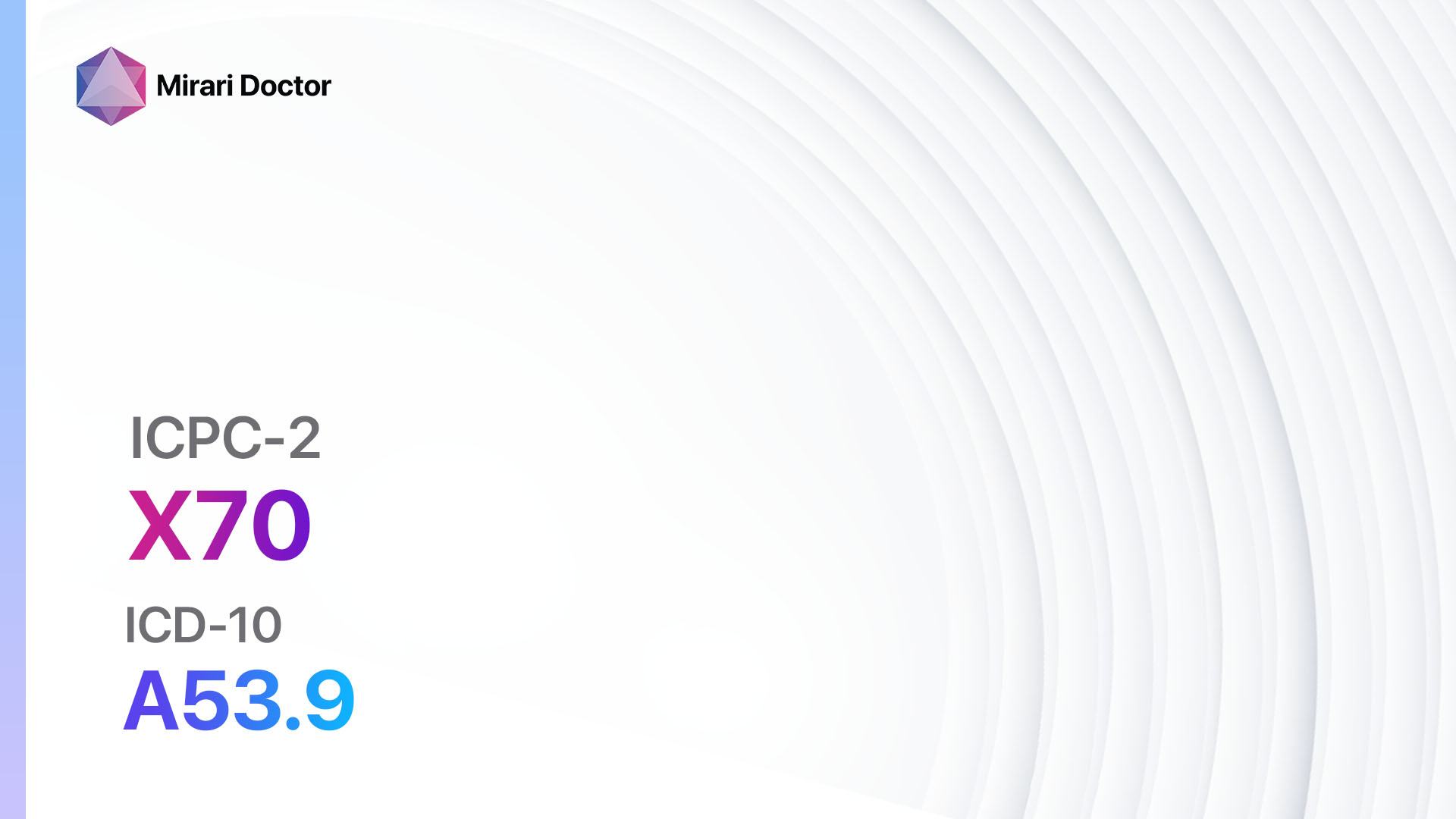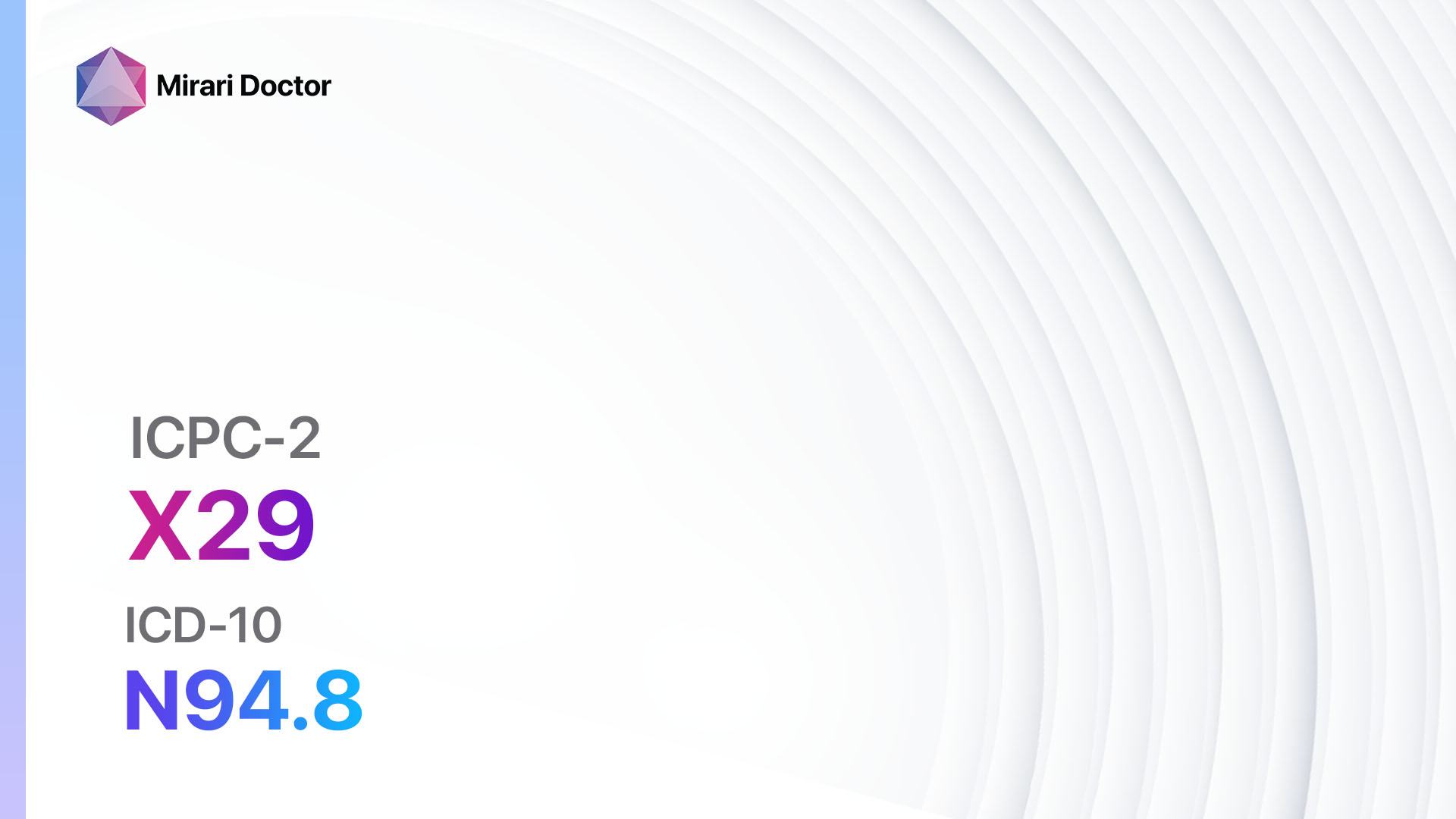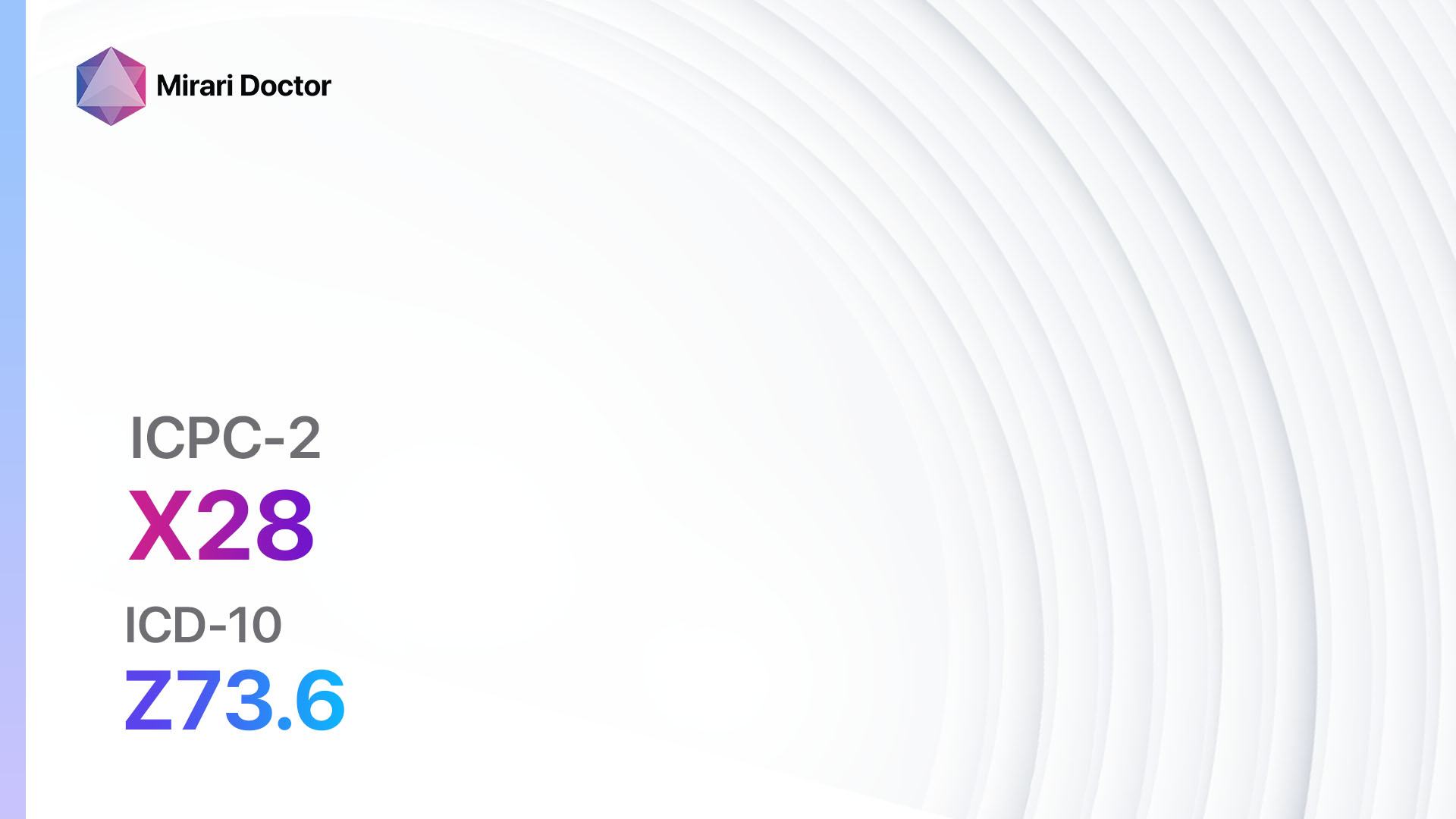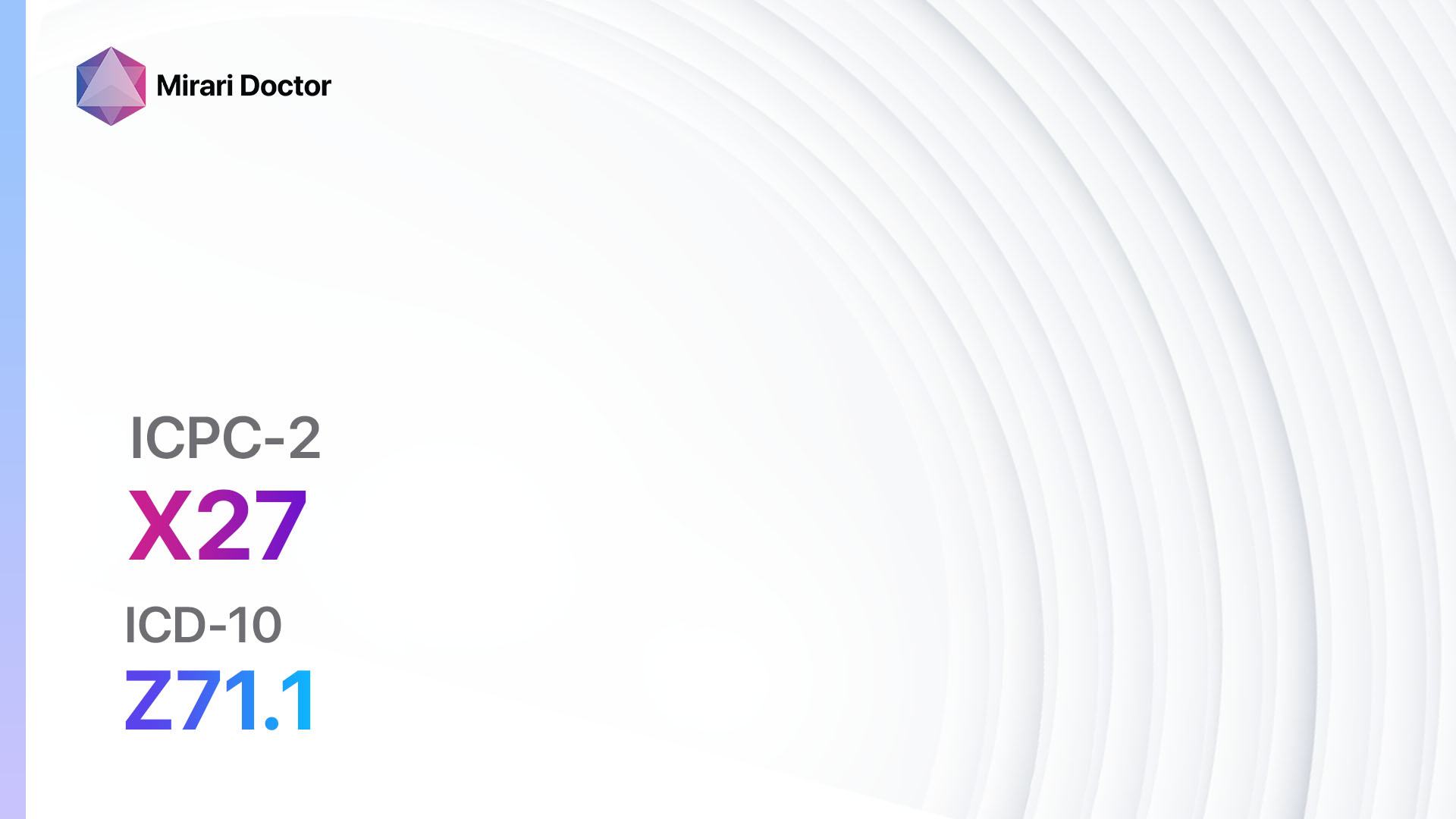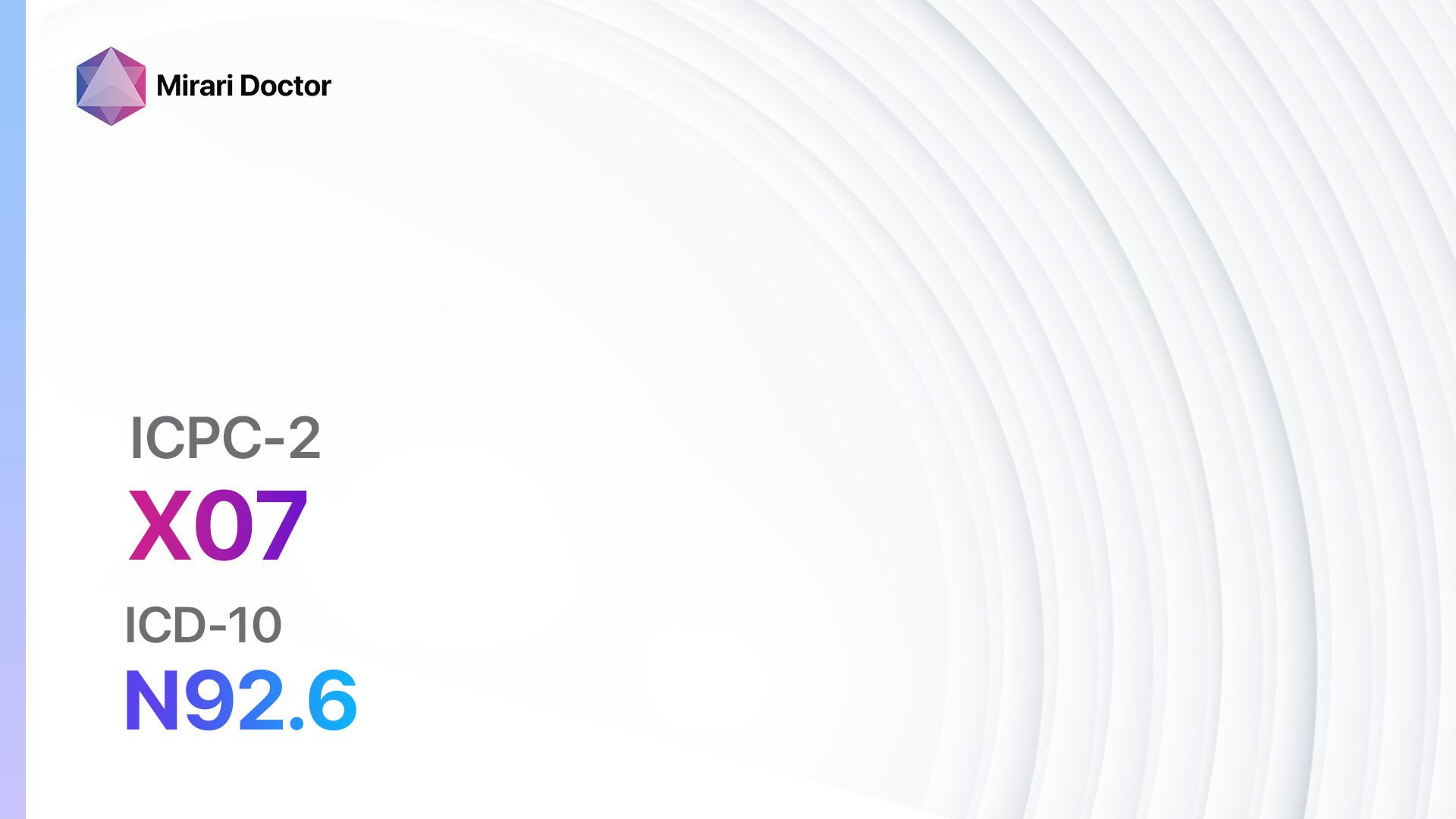
Introduction
Menstruation irregularity or frequent menstruation refers to any changes in the regularity, duration, or flow of a woman’s menstrual cycle. It can be caused by various factors and may have significant impacts on a woman’s overall health and quality of life[1]. The aim of this guide is to provide healthcare professionals with a comprehensive approach to diagnosing and managing menstruation irregularity or frequent menstruation.
Codes
- ICPC-2 Code: X07 Menstruation irregular/frequent[2]
- ICD-10 Code: N92.6 Irregular menstruation, unspecified[3]
Symptoms
- Irregular menstrual cycles: Menstrual cycles that occur at irregular intervals, with variations in cycle length.
- Frequent menstruation: Menstrual cycles that occur more frequently than the normal 21 to 35-day cycle[4].
Causes
- Hormonal imbalances: Fluctuations in hormone levels, particularly estrogen and progesterone, can disrupt the normal menstrual cycle.
- Polycystic ovary syndrome (PCOS): A condition characterized by hormonal imbalances and the formation of small cysts on the ovaries.
- Uterine fibroids: Noncancerous growths in the uterus that can cause changes in menstrual patterns.
- Thyroid disorders: Abnormalities in thyroid function can affect hormone levels and menstrual regularity.
- Stress and lifestyle factors: High levels of stress, excessive exercise, and significant weight changes can disrupt the menstrual cycle[5][6].
Diagnostic Steps
Medical History
- Gather information about the patient’s menstrual history, including the regularity, duration, and flow of their cycles.
- Inquire about any recent changes in lifestyle, stress levels, or weight.
- Assess for any underlying medical conditions, such as PCOS or thyroid disorders.
- Determine if the patient is taking any medications that may affect the menstrual cycle[7].
Physical Examination
- Perform a pelvic examination to assess the health of the reproductive organs.
- Check for any signs of hormonal imbalances, such as excessive hair growth or acne.
- Evaluate for the presence of uterine fibroids or other abnormalities[8].
Laboratory Tests
- Hormone levels: Measure levels of estrogen, progesterone, follicle-stimulating hormone (FSH), and luteinizing hormone (LH) to assess for hormonal imbalances.
- Thyroid function tests: Check thyroid-stimulating hormone (TSH), free thyroxine (T4), and triiodothyronine (T3) levels to rule out thyroid disorders.
- Blood count: Evaluate for anemia or other blood disorders that may contribute to menstrual irregularities[9].
Diagnostic Imaging
- Transvaginal ultrasound: Visualize the reproductive organs to identify any structural abnormalities, such as uterine fibroids or ovarian cysts.
- Magnetic resonance imaging (MRI): Provide detailed images of the reproductive organs to further assess for any abnormalities[10].
Other Tests
- Endometrial biopsy: Collect a sample of the uterine lining for analysis to rule out conditions such as endometrial hyperplasia or cancer.
- Genetic testing: Consider genetic testing for conditions such as PCOS or other genetic disorders that may affect hormonal balance.
Follow-up and Patient Education
- Schedule follow-up appointments to monitor the patient’s response to treatment and adjust interventions as necessary.
- Provide education on the importance of maintaining a healthy lifestyle, managing stress, and maintaining a healthy weight.
- Discuss the potential long-term implications of untreated menstrual irregularities, such as fertility issues or increased risk of certain health conditions.
Possible Interventions
Traditional Interventions
Medications:
Top 5 drugs for Menstruation irregular/frequent:
- Combined oral contraceptives (e.g., Ethinyl estradiol and levonorgestrel):
- Cost: $20-$50/month.
- Contraindications: History of blood clots, certain types of cancer, liver disease.
- Side effects: Nausea, breast tenderness, breakthrough bleeding.
- Severe side effects: Blood clots, stroke, heart attack.
- Drug interactions: Certain antibiotics, anticonvulsants.
- Warning: Increased risk of blood clots in women over 35 who smoke.
- Progestin-only contraceptives (e.g., Norethindrone):
- Cost: $20-$50/month.
- Contraindications: History of blood clots, certain types of cancer, liver disease.
- Side effects: Irregular bleeding, mood changes, weight gain.
- Severe side effects: Blood clots, stroke, heart attack.
- Drug interactions: Certain antibiotics, anticonvulsants.
- Warning: May cause irregular bleeding.
- Nonsteroidal anti-inflammatory drugs (NSAIDs) (e.g., Ibuprofen, Naproxen):
- Cost: $5-$20/month.
- Contraindications: History of stomach ulcers, kidney disease, bleeding disorders.
- Side effects: Stomach upset, increased risk of bleeding.
- Severe side effects: Stomach ulcers, kidney damage.
- Drug interactions: Anticoagulants, other NSAIDs.
- Warning: Long-term use may increase the risk of cardiovascular events.
- Hormone therapy (e.g., Estrogen therapy):
- Cost: $20-$50/month.
- Contraindications: History of blood clots, certain types of cancer, liver disease.
- Side effects: Breast tenderness, bloating, mood changes.
- Severe side effects: Blood clots, stroke, heart attack.
- Drug interactions: Certain antibiotics, anticonvulsants.
- Warning: Increased risk of blood clots in women over 35 who smoke.
- Gonadotropin-releasing hormone (GnRH) agonists (e.g., Leuprolide):
- Cost: $200-$500/month.
- Contraindications: Pregnancy, breastfeeding, certain types of cancer.
- Side effects: Hot flashes, vaginal dryness, mood changes.
- Severe side effects: Bone loss, increased risk of fractures.
- Drug interactions: None reported.
- Warning: May cause temporary worsening of symptoms before improvement.
Alternative Drugs:
- Metformin: May be used in women with PCOS to regulate menstrual cycles and improve insulin sensitivity.
- Spironolactone: Can be used in women with hormonal imbalances to reduce androgen levels and improve menstrual regularity.
- Clomiphene: Used to induce ovulation in women with irregular menstrual cycles due to hormonal imbalances.
- Dydrogesterone: A progestin that can be used to regulate menstrual cycles and treat certain menstrual disorders.
- Desmopressin: May be used in women with bleeding disorders to reduce heavy menstrual bleeding.
Surgical Procedures
- Endometrial ablation: A minimally invasive procedure that destroys the lining of the uterus to reduce or eliminate menstrual bleeding. Cost: $5,000 to $10,000.
- Hysterectomy: Surgical removal of the uterus, which eliminates menstrual bleeding. Cost: $10,000 to $20,000.
Alternative Interventions
- Acupuncture: May help regulate menstrual cycles and reduce symptoms. Cost: $60-$120 per session.
- Herbal supplements: Certain herbs, such as chasteberry and black cohosh, may have potential benefits for regulating menstrual cycles. Cost: Varies depending on the specific supplement.
- Stress management techniques: Encourage patients to engage in stress-reducing activities, such as meditation, yoga, or counseling. Cost: Varies depending on the specific technique.
- Dietary changes: Encourage a balanced diet rich in fruits, vegetables, and whole grains to support overall health and hormonal balance. Cost: Varies depending on individual food choices.
- Exercise: Encourage regular physical activity to promote overall health and hormonal balance. Cost: Varies depending on individual preferences and access to exercise facilities.
Lifestyle Interventions
- Maintain a healthy weight: Excess weight can disrupt hormone levels and contribute to menstrual irregularities. Cost: Varies depending on individual dietary and exercise choices.
- Manage stress: Encourage stress-reducing activities, such as meditation, yoga, or counseling. Cost: Varies depending on the specific technique.
- Get regular exercise: Engage in regular physical activity to support overall health and hormonal balance. Cost: Varies depending on individual preferences and access to exercise facilities.
- Follow a balanced diet: Encourage a diet rich in fruits, vegetables, whole grains, and lean proteins to support overall health and hormonal balance. Cost: Varies depending on individual food choices.
- Avoid smoking and excessive alcohol consumption: These habits can disrupt hormone levels and contribute to menstrual irregularities. Cost: Varies depending on individual choices.
It is important to note that the cost ranges provided are approximate and may vary depending on the location and availability of the interventions. It is recommended to consult with a healthcare professional for personalized treatment options and cost estimates.
Mirari Cold Plasma Alternative Intervention
Understanding Mirari Cold Plasma
- Safe and Non-Invasive Treatment: Mirari Cold Plasma is a safe and non-invasive treatment option for various skin conditions. It does not require incisions, minimizing the risk of scarring, bleeding, or tissue damage.
- Efficient Extraction of Foreign Bodies: Mirari Cold Plasma facilitates the removal of foreign bodies from the skin by degrading and dissociating organic matter, allowing easier access and extraction.
- Pain Reduction and Comfort: Mirari Cold Plasma has a local analgesic effect, providing pain relief during the treatment, making it more comfortable for the patient.
- Reduced Risk of Infection: Mirari Cold Plasma has antimicrobial properties, effectively killing bacteria and reducing the risk of infection.
- Accelerated Healing and Minimal Scarring: Mirari Cold Plasma stimulates wound healing and tissue regeneration, reducing healing time and minimizing the formation of scars.
Mirari Cold Plasma Prescription
Video instructions for using Mirari Cold Plasma Device – X07 Menstruation irregular/frequent (ICD-10:N92.6)
| Mild | Moderate | Severe |
| Mode setting: 2 (Wound Healing) Location: 2 (Prostate & Uterus) Morning: 15 minutes, Evening: 15 minutes |
Mode setting: 2 (Wound Healing) Location: 2 (Prostate & Uterus) Morning: 30 minutes, Lunch: 30 minutes, Evening: 30 minutes |
Mode setting: 2 (Wound Healing) Location: 2 (Prostate & Uterus) Morning: 30 minutes, Lunch: 30 minutes, Evening: 30 minutes |
| Mode setting: 7 (Immunotherapy) Location: 1 (Sacrum) Morning: 15 minutes, Evening: 15 minutes |
Mode setting: 7 (Immunotherapy) Location: 1 (Sacrum) Morning: 30 minutes, Lunch: 30 minutes, Evening: 30 minutes |
Mode setting: 7 (Immunotherapy) Location: 1 (Sacrum) Morning: 30 minutes, Lunch: 30 minutes, Evening: 30 minutes |
| Total Morning: 30 minutes approx. $5 USD, Evening: 30 minutes approx. $5 USD |
Total Morning: 60 minutes approx. $10 USD, Lunch: 60 minutes approx. $10 USD, Evening: 60 minutes approx. $10 USD, |
Total Morning: 60 minutes approx. $10 USD, Lunch: 60 minutes approx. $10 USD, Evening: 60 minutes approx. $10 USD, |
| Usual treatment for 7-60 days approx. $70 USD – $600 USD | Usual treatment for 6-8 weeks approx. $1,260 USD – $1,680 USD |
Usual treatment for 3-6 months approx. $2,700 USD – $5,400 USD
|
 |
|
Use the Mirari Cold Plasma device to treat Menstruation irregular/frequent effectively.
WARNING: MIRARI COLD PLASMA IS DESIGNED FOR THE HUMAN BODY WITHOUT ANY ARTIFICIAL OR THIRD PARTY PRODUCTS. USE OF OTHER PRODUCTS IN COMBINATION WITH MIRARI COLD PLASMA MAY CAUSE UNPREDICTABLE EFFECTS, HARM OR INJURY. PLEASE CONSULT A MEDICAL PROFESSIONAL BEFORE COMBINING ANY OTHER PRODUCTS WITH USE OF MIRARI.
Step 1: Cleanse the Skin
- Start by cleaning the affected area of the skin with a gentle cleanser or mild soap and water. Gently pat the area dry with a clean towel.
Step 2: Prepare the Mirari Cold Plasma device
- Ensure that the Mirari Cold Plasma device is fully charged or has fresh batteries as per the manufacturer’s instructions. Make sure the device is clean and in good working condition.
- Switch on the Mirari device using the power button or by following the specific instructions provided with the device.
- Some Mirari devices may have adjustable settings for intensity or treatment duration. Follow the manufacturer’s instructions to select the appropriate settings based on your needs and the recommended guidelines.
Step 3: Apply the Device
- Place the Mirari device in direct contact with the affected area of the skin. Gently glide or hold the device over the skin surface, ensuring even coverage of the area experiencing.
- Slowly move the Mirari device in a circular motion or follow a specific pattern as indicated in the user manual. This helps ensure thorough treatment coverage.
Step 4: Monitor and Assess:
- Keep track of your progress and evaluate the effectiveness of the Mirari device in managing your Menstruation irregular/frequent. If you have any concerns or notice any adverse reactions, consult with your health care professional.
Note
This guide is for informational purposes only and should not replace the advice of a medical professional. Always consult with your healthcare provider or a qualified medical professional for personal advice, diagnosis, or treatment. Do not solely rely on the information presented here for decisions about your health. Use of this information is at your own risk. The authors of this guide, nor any associated entities or platforms, are not responsible for any potential adverse effects or outcomes based on the content.
Mirari Cold Plasma System Disclaimer
- Purpose: The Mirari Cold Plasma System is a Class 2 medical device designed for use by trained healthcare professionals. It is registered for use in Thailand and Vietnam. It is not intended for use outside of these locations.
- Informational Use: The content and information provided with the device are for educational and informational purposes only. They are not a substitute for professional medical advice or care.
- Variable Outcomes: While the device is approved for specific uses, individual outcomes can differ. We do not assert or guarantee specific medical outcomes.
- Consultation: Prior to utilizing the device or making decisions based on its content, it is essential to consult with a Certified Mirari Tele-Therapist and your medical healthcare provider regarding specific protocols.
- Liability: By using this device, users are acknowledging and accepting all potential risks. Neither the manufacturer nor the distributor will be held accountable for any adverse reactions, injuries, or damages stemming from its use.
- Geographical Availability: This device has received approval for designated purposes by the Thai and Vietnam FDA. As of now, outside of Thailand and Vietnam, the Mirari Cold Plasma System is not available for purchase or use.
References
- American College of Obstetricians and Gynecologists. (2019). Abnormal Uterine Bleeding. Retrieved from https://www.acog.org/patient-resources/faqs/gynecologic-problems/abnormal-uterine-bleeding
- WONCA International Classification Committee. (2005). ICPC-2: International Classification of Primary Care. Oxford University Press.
- World Health Organization. (2019). ICD-10: International Statistical Classification of Diseases and Related Health Problems, 10th Revision.
- Centers for Disease Control and Prevention. (2021). Heavy Menstrual Bleeding. Retrieved from https://www.cdc.gov/ncbddd/blooddisorders/women/menorrhagia.html
- Munro, M. G., Critchley, H. O., Broder, M. S., & Fraser, I. S. (2011). FIGO classification system (PALM-COEIN) for causes of abnormal uterine bleeding in nongravid women of reproductive age. International Journal of Gynecology & Obstetrics, 113(1), 3-13.
- Whitaker, L., & Critchley, H. O. (2016). Abnormal uterine bleeding. Best Practice & Research Clinical Obstetrics & Gynaecology, 34, 54-65.
- National Institute for Health and Care Excellence. (2018). Heavy menstrual bleeding: assessment and management. NICE guideline [NG88].
- American Society for Reproductive Medicine. (2012). Indications and options for endometrial ablation. Fertility and Sterility, 98(5), 1160-1167.
- Matteson, K. A., & Clark, M. A. (2010). Questioning our questions: do frequently asked questions adequately cover the aspects of women’s lives most affected by abnormal uterine bleeding? Opinions of women with abnormal uterine bleeding participating in focus group discussions. Women & Health, 50(2), 195-211.
- Maheux-Lacroix, S., Li, F., Laberge, P. Y., & Abbott, J. (2016). Imaging for polyps and leiomyomas in women with abnormal uterine bleeding: a systematic review. Obstetrics & Gynecology, 128(6), 1425-1436.
Related articles
Made in USA


